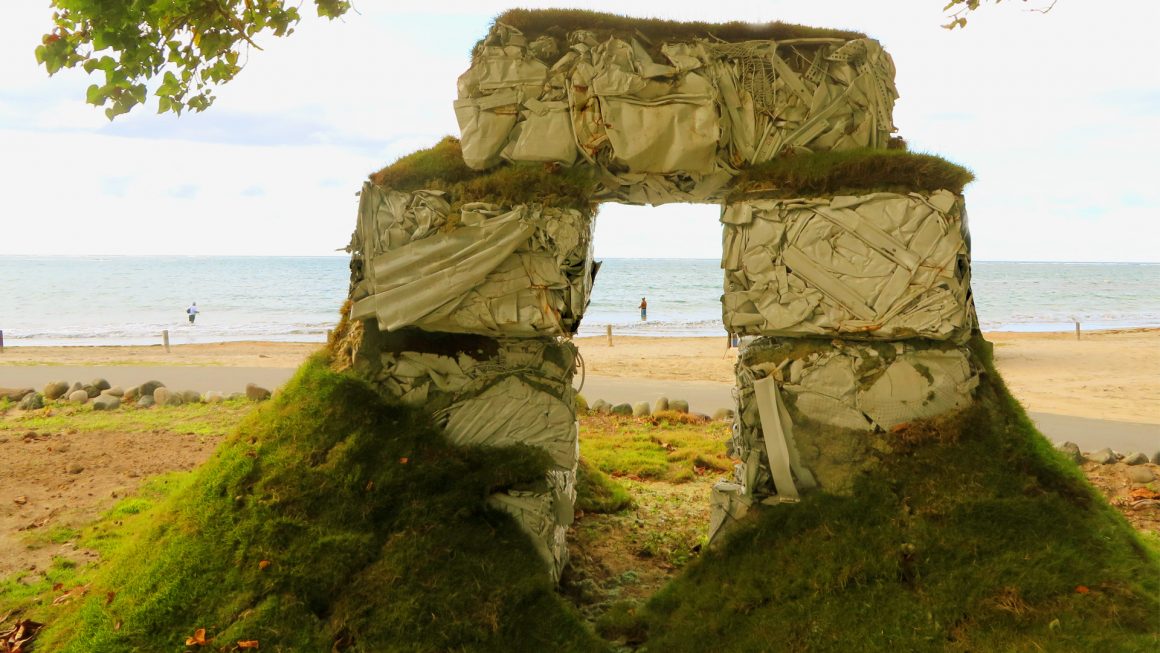Arc
Jack Henry offers a vision of the social and environmental possibilities our current reality could lead to by presenting a literal framework in which the viewer can reflect on contemporary behavior. It is important to know what we take for granted, what we consider to be exhausted or insufficient and what we can do without. The formal structures of the installation contribute to the conceptual dialogue between nature and excess consumption, a theme that has been embraced by the art world, which serves as a compass for social change. By recycling the objects that have been labeled as trash by society and repurposing them as a sculpture demonstrates one of the ways society can deal with excess consumer materials With the help of a local recycling center, Henry created blocks composed of items from the area, what people in the vicinity have disposed of, from kitchen appliances to old fences, and even a bicycle. Ultimately, Arc represents the community through the artifacts of their recent activity which serves as evidence of life of the area in close proximity of the installation itself. Not only does the artwork serve as a metaphorical reflection of the viewer’s actions, it literally puts them on display.






My work utilizes discarded objects and plant life collected from my surroundings. Some of the material is embedded between layers of gypsum cement to represent the passage of time. Replicas of objects are cast in resin or plaster and become pieces for an assemblage. Found paper is decollaged together and drawn into to create imagined landscapes.
Each process places industrial byproducts and natural growth on an equal plane. The purpose is not to condemn the forces of industry for it’s impact on the environment, but to reflect on our current position in the Anthropocene in aesthetic terms. I want to illustrate that beauty still exists in the American landscape despite the perversion caused by industrial expansion. I’m drawn towards the sublime moments that occur when our objects depart from human contact and harbor within plant growth, resulting in accidental sculptures and monuments to cultural disaffection.


